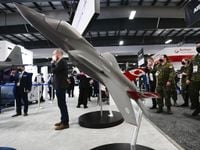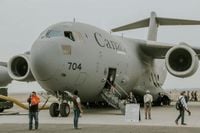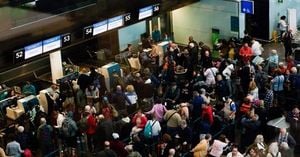Canada's commitment to purchasing 88 F-35 fighter jets from the United States has sparked a heated debate among military experts and political figures. In March 2025, Prime Minister Mark Carney announced a comprehensive review of the deal, which involves a hefty price tag of US$85 million per aircraft. This review aims to ensure that the current contract aligns with the best interests of Canadians and the Canadian Armed Forces.
Canada is legally obligated to acquire the first 16 F-35 jets from Lockheed Martin, a U.S.-based defense contractor. Each aircraft contains approximately US$2.3 million worth of Canadian-supplied components, emphasizing the intertwined nature of the defense industries in both countries.
Experts like David Bercuson, a history professor at the University of Calgary, argue that abandoning the F-35 deal in favor of another option would create unnecessary complications. "We can’t afford that," Bercuson stated, highlighting the logistical challenges of maintaining two different types of fighter jets within Canada’s relatively small air force. He further questioned the potential financial fallout from cancellation fees and the need for different supply lines and maintenance skills.
Jim Donihee, a retired colonel from the Royal Canadian Air Force, echoed Bercuson's concerns, noting that only about 40 percent of Canada's Air Force assets are currently considered airworthy. "If fire departments were driving fire trucks that were 40 years old, even with good people and training, they likely wouldn’t meet demands," he said, drawing a stark analogy to the aging state of Canada's military equipment.
Historically, Canada has attempted to foster its own aerospace industry, as seen with the Avro Arrow project in the 1950s. This ambitious program aimed to develop a supersonic fighter jet but was ultimately canceled due to cost concerns under Prime Minister John Diefenbaker. Bercuson reflected on this failure, stating, "I think at the time, the thought was that we wanted to be self-sufficient in building our own warplanes…but it was a dream, because we did not have the resources to do it."
Donihee believes that reigniting Canada's aerospace industry is possible, citing the presence of skilled minds and advanced companies across the country. However, he cautioned that such an endeavor would require a significant investment of time and resources, potentially costing tens if not hundreds of billions of dollars. "Is it doable? Yeah. Is it the wisest approach at this point in time? I suggest not," he said.
Jack Granatstein, a historian with extensive military experience, pointed out that Canada has been paying into the F-35 production plan since 1998. He emphasized the importance of interoperability with the U.S. military, stating, "The F-35 is the best thing available." Granatstein lamented the bureaucratic hurdles that plague defense procurement in Canada, noting, "We can’t buy a goddamn pistol in less than 10 years."
In a contrasting political landscape, former Deputy Prime Minister Chrystia Freeland's recent comments regarding Canada potentially relying on European allies for security have raised eyebrows. During her leadership campaign, Freeland suggested that Canada might need to depend on France and Britain for protection against the United States, which she characterized as a threat to Canadian sovereignty.
Freeland's assertion that NATO partners could guarantee Canada’s security has been met with skepticism. Critics argue that the geographical distance between Canada and these European nations makes such reliance impractical. France, despite having the largest armed forces in the European Union with 201,000 military personnel, is nearly 8,000 kilometers away from Vancouver. Meanwhile, Britain's military capabilities have significantly diminished since World War II, with only 108,413 personnel, including reservists.
British historian Dr. Mark Felton has publicly questioned the United Kingdom's readiness to defend itself, let alone assist Canada. He pointed out that Britain’s military assets are concentrated and vulnerable, with many key facilities at risk of attack. Notably, Britain's three new E-7 Wedgetail aircraft, intended for airborne warning and control, won’t be operational until late 2025.
Military spending trends further illustrate the challenges facing Britain. In 2023, Russia allocated 5.9 percent of its GDP to military expenditures, while the U.S. spent 3.4 percent. In stark contrast, the U.K. has reduced its defense spending to just 2.3 percent of GDP, down from 4.1 percent in 1990. This decline has resulted in a significant reduction in the number of operational tanks and combat ships.
Freeland’s proposal also falters when examining nuclear deterrence. Britain's nuclear arsenal, which relies on U.S.-made Trident missiles, lacks true independence. The British nuclear submarines, which carry these missiles, have surpassed their intended service life, further complicating the reliability of this deterrent.
In light of these considerations, the message from former President Donald Trump urging NATO allies, including Canada, to increase military spending resonates strongly. The reality is that Canada cannot afford to overlook the necessity of bolstering its own defense capabilities while also recognizing the limitations of relying on distant allies.
As the debate continues over the F-35 purchase and broader defense strategy, it is clear that Canada faces a complex landscape in securing its national interests. The discussions surrounding military procurement and international alliances will undoubtedly shape the future of Canada's defense posture in the years to come.





